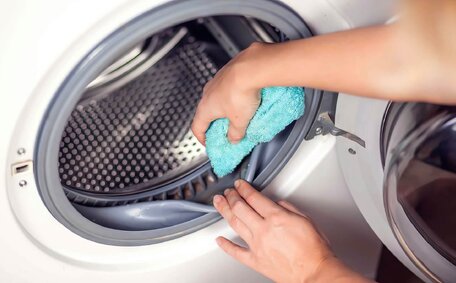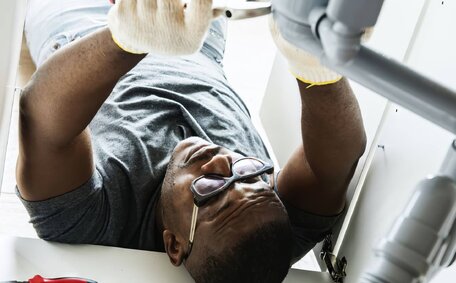Introduction to Insulation in Hot Water Systems
Proper insulation is essential for minimising energy waste and heat loss from hot water tanks and pipes.
Proper insulation strategies significantly enhance system energy efficiency, leading to considerable energy savings and reduced bills.
This article examines insulation’s vital role in hot water systems and its impact on water heater performance.
You’ll discover different methods for insulating tanks and pipes, from water heater blankets to pipe lagging.
Our aim is to guide you in insulating your hot water system for sustained efficiency. Implementing these practical tips will help you reduce heat loss and energy waste in your system. This allows you to control your energy usage and save money that would otherwise be lost.
Understanding Heat Loss in Hot Water Tanks and Pipes
Heat loss can have a significant impact on the efficiency and operating costs of hot water systems. An uninsulated water heater tank and exposed pipes lose considerable heat, reducing the system’s efficiency.
Industry estimates suggest that an uninsulated water heater can lose up to 3 kWh per day through standby heat loss. Over a year, this could add up to over 1,000 kWh in wasted energy.
Leaking heat not only inflates your energy bills but also increases your carbon footprint. It also means your system has to work harder and burn more fuel for heating water to the required temperature.
Pipe insulation serves as a barrier, preventing heat loss in hot water systems. Materials such as fibreglass and foam sleeves envelop tanks and pipes, containing heat to reduce radiation.
Insulation minimises heat loss, thereby enhancing energy efficiency and reducing the system’s energy requirements. This improves efficiency and can lower operating costs. Australian regulatory standards mandate a minimum level of insulation for new installations.
Homeowners looking to enhance their existing systems should consider insulating their water heater tanks and pipes. Adjusting the thermostat down a few degrees and taking shorter showers also contributes to energy conservation.
With the right insulation approach, Cambridge Park households can save energy and slash bills while enjoying your hot water pipes’ efficient performance.
Pipe Lagging - Materials, Installation and Benefits
Pipe lagging effectively minimises heat loss from hot water pipes. It involves wrapping pipe sleeves around the exterior of the pipes to contain the heat.
Popular materials for pipe lagging include:
- Polyethylene foam: A flexible and lightweight material that’s simple to install and provides effective insulation.
- Rubber foam - Dense insulation with added flexibility.
- Fibreglass - Rigid fibreglass sleeves with aluminium foil exterior. Excellent insulation but needs care when handling.
- Calcium silicate - Durable, fire-resistant option.
These materials are available in various thicknesses, lengths and diameters to suit different pipe dimensions. Thicker lagging provides greater insulation, with R-values typically ranging from R1 to R3.
Installing pipe lagging is a manageable energy-saving task for DIY enthusiasts. The key steps are:
- Measure the pipe length and diameter to cut sleeves to size.
- Clean pipes thoroughly so lagging adheres properly.
- Slide lagging over the pipe and seal joins with insulation tape.
- Secure with zip ties or metal clamps depending on lagging type.
Correct installation guarantees the insulation fits tightly, eliminating gaps that could leak heat. Outdoor pipes should have UV-resistant lagging to withstand sun exposure.
Pipe lagging delivers several benefits for energy efficiency water in hot water systems:
- Raises water temperature by reducing surface heat loss.
- Slashes heat loss by up to 50% compared to unlagged pipes.
- Enhances energy efficiency, potentially cutting energy bills by as much as $200 annually.
- Easy to retrofit existing pipes in homes and businesses.
- Cuts down carbon emissions from water heating.
By insulating your exposed hot water pipes with quality lagging, Cambridge Park residents can achieve optimal energy efficiency.
Insulating Hot Water Tanks
Insulating your water tank is among the most effective strategies to optimise your system’s energy efficiency. Without insulation, tanks can lose a significant amount of heat through their surfaces.
For tanks, the predominant insulating blanket methods are wrapping or using foam jackets. Insulation blankets wrap around the exterior of the tank like a sleeve. They are typically made from fibreglass or cotton insulation encased in a protective cover.
Key steps for heater insulating with a water heater insulation blanket:
- Turn off power and water to the tank.
- Remove outer jacket on electric water heaters.
- Clean tank exterior so blanket adheres properly.
- Wrap blanket around tank and secure with ties.
- Replace electric heater jacket if removed earlier.
Foam jackets, moulded rigid foam covers, offer tank-specific insulation. Professional installation is recommended for this method.
Insulating an electric water heater and gas tanks differs slightly in technique but delivers similar efficiency gains. Effectively insulated tanks can cut standby heat loss by 25-45%.
For a 270-litre electric tank, reducing energy use from 3.4 to 1.9 kWh/day can result in over $200 in annual energy savings. Exact savings depend on factors like system type, climate and usage patterns.
Insulation also helps to keep water hot longer, maintaining your desired temperature with less energy. Reducing tank thermostat settings lowers energy consumption without compromising comfort.
When adding insulation, be mindful not to cover necessary openings like pressure relief valves. Seek professional advice to pick the right insulation method for your system.
With the optimal insulation approach, Cambridge Park households can easily optimise their hot water tanks for lower energy bills and emissions.
DIY Guide to Installing Hot Water System Insulation
Most households will find adding insulation to their hot water system a straightforward DIY project. With some simple preparation and the right materials, you can optimise your system to minimise wasted energy and heat loss.
There are a few key safety precautions to take when working on your hot water system:
- Before starting insulation, always make sure to switch off the power and water supply to the hot water system.
- Allow the tank and pipes to fully cool if the system was recently active.
- Review safety instructions for any insulation materials used.
- Wear protective gloves and eye wear when handling fibreglass, foam or other irritants.
Useful tools and materials include:
- Tape measure
- Marker pen
- Utility knife or sharp scissors
- Insulation tape
- Cable ties or clamps
- Selected insulation blankets, jackets or lagging
Start by carefully measuring the dimensions of tanks and pipe lengths. Refer to manufacturer instructions for pre-sized insulation suited to your system. Cut lagging sleeves and blankets to the required shapes and diameters using a sharp blade.
Thoroughly clean all surfaces before applying insulation. For blankets, wrap around the tank or pipes, securing with ties or tape. For lagging, slide over pipes and seal joins with insulation tape, clipping at regular intervals.
Aim for a snug fit without gaps or exposed sections. Check that valves, thermostats and safety devices remain accessible once insulation is applied. Outdoor insulation should be weatherproof and UV resistant.
For complex set-ups, cut out uncertainties by insulating valves or challenging access points, and consult a licenced professional for assistance. Proper installation is essential for insulation to work effectively.
With the right DIY approach, adding insulation is an achievable weekend project. Take your time to measure twice and cut once, and you’ll soon be optimising your hot water system for maximum savings on your energy bills.
Professional Insulation Services for Optimal Efficiency
Installing insulation for your hot water system may present a challenge as a DIY task. For Cambridge Park homeowners who want guaranteed results from their insulation, engaging a professional plumbing service is highly recommended.
The team at Cambridge Park Plumbing have years of expertise when it comes to optimising hot water systems for maximum efficiency. We provide full energy audits to determine where your system is losing heat and energy. This Enables us to develop a customised insulation plan for tanks, pipes, valves, and other critical areas.
Our qualified technicians use industry-leading materials and proven installation techniques to optimise insulation performance. We handle all the technical aspects, from safely draining tanks to adjusting thermostats and pressure relief valves.
Our professional grade insulation dramatically reduces standby heat loss from your water system. You can expect:
- 25-45% reduction in standby heat loss from tanks.
- Up to 50% less heat loss from properly lagged pipes.
- Lower operating costs and reduced energy consumption.
- Improved performance and hot water delivery.
We ensure your insulation complies with Australian standards and building regulations. Our team can advise on additional energy efficiency measures like solar or heat pump systems.
For the best insulation results and enhanced efficiency from your hot water system, contact the team at Cambridge Park Plumbing on 1300 349 338. Or request a free quote via our website to get started optimising your home today.
Complementary Strategies for Energy Efficient Hot Water
While insulation is key, there are other handy ways Cambridge Park households can maximise the energy efficiency of their hot water systems.
Tanks require only 60C to deliver adequate supply and prevent bacterial growth. Turning down your thermostat by 5-10 can reduce energy consumption and costs without impacting comfort or safety.
Installing water-saving fixtures such as low-flow showerheads and tap aerators reduces home water consumption. With lower water volumes to heat, your system doesn’t have to work as hard or burn as much energy.
Assessing your lifestyle and hot water usage allows you to make informed changes. For example:
- Take shorter showers of 4-5 minutes maximum.
- Run full loads in your dishwasher and washing machine.
- Fix any leaking taps which waste hot water.
- Insulate exposed hot water pipes near fittings.
Proper insulation combined with mindful usage reduces the energy needed to maintain efficient hot water systems, leading to significant savings.
For expert advice on achieving an energy-efficient hot water system, reach out to Cambridge Park Plumbing at 1300 349 338.
Lowering your water heater’s thermostat is a simple yet effective way to maintain temperature and save energy. Maintaining a tank temperature of 60°C is sufficient for providing adequate hot water.





